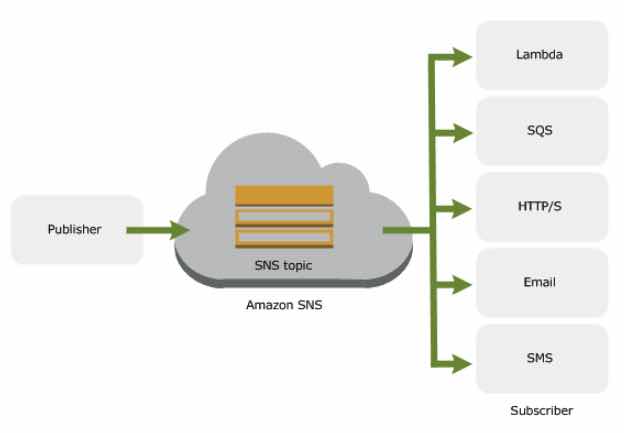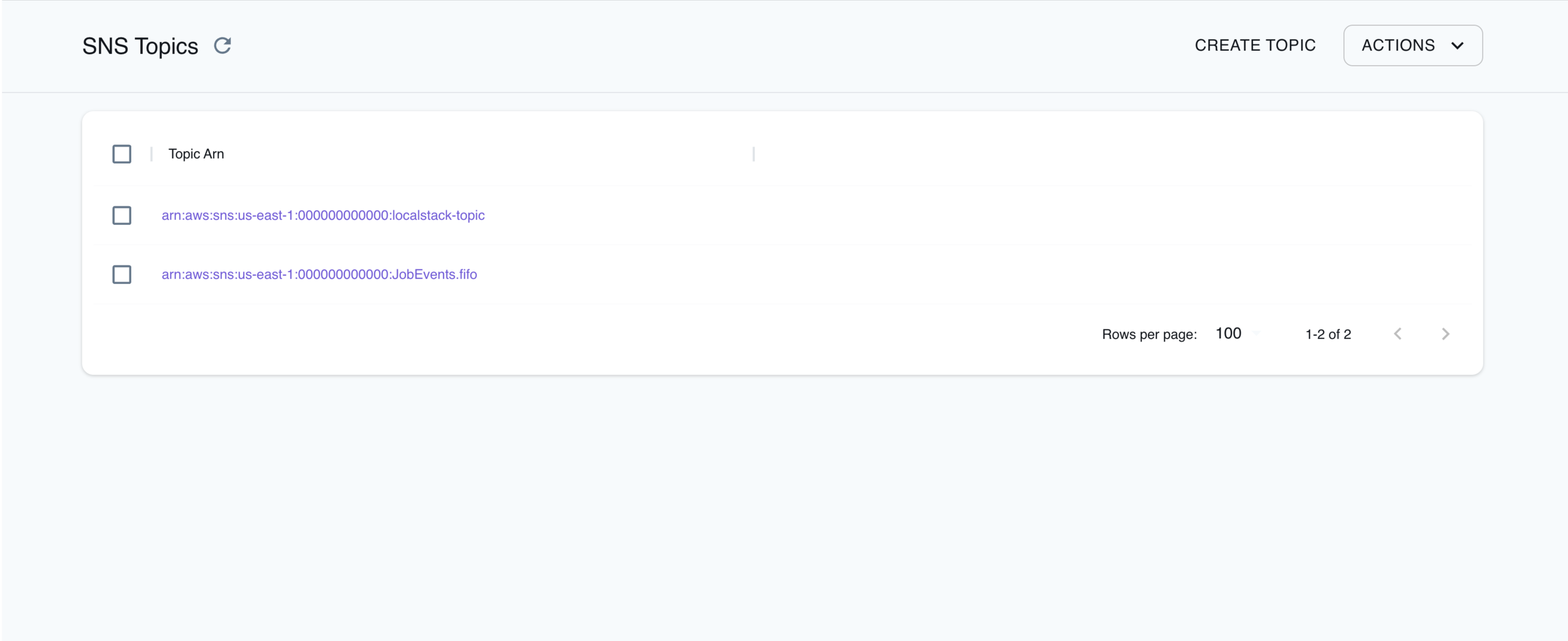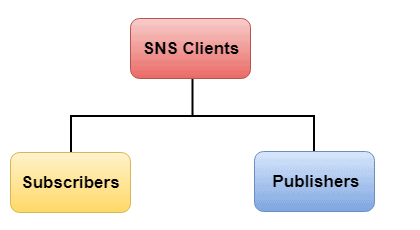Understanding Amazon Simple Notification Service (SNS)
Amazon Simple Notification Service (SNS) is a fully managed pub/sub messaging service. It allows for decoupled, asynchronous communication between distributed systems. Within the AWS ecosystem, SNS serves as a central hub for sending messages to various subscribers. An aws sns topic acts as a named channel for delivering messages. Publishers send messages to a topic. Subscribers receive these messages. This architecture enables scalable and reliable communication between different components of an application or across various AWS services. Key elements include publishers (those sending messages), subscribers (those receiving messages), and the topic itself, which acts as the intermediary. Understanding these core components is crucial to effectively utilizing the service.
The aws sns topic facilitates asynchronous communication. This means that publishers don’t need to wait for a response from subscribers. Messages are delivered reliably, even if subscribers are temporarily unavailable. This asynchronous nature is key for building robust and fault-tolerant applications. Different messaging protocols are supported, enabling integration with a wide range of systems. Choosing the right aws sns topic configuration involves considering factors such as message volume, delivery requirements, and the types of subscribers involved. The flexibility offered by SNS makes it a powerful tool for various application architectures.
An aws sns topic simplifies the task of distributing messages to numerous subscribers concurrently. This “fan-out” pattern is highly beneficial in scenarios such as event notifications, real-time updates, and distributed system communication. The platform’s scalability ensures that it can handle a high volume of messages efficiently. This scalability is crucial in applications with fluctuating message loads. By decoupling publishers and subscribers, the aws sns topic enhances application resilience and maintainability. This makes it an essential service for building modern, distributed cloud applications. Efficient management of an aws sns topic is essential for optimal performance and reliability.
Creating and Configuring Your First AWS SNS Topic
This section provides a step-by-step guide to creating an AWS SNS topic using the AWS Management Console. The process is straightforward and involves several simple steps. First, log in to the AWS Management Console and navigate to the Simple Notification Service (SNS) section. You’ll see a dashboard providing an overview of your existing SNS topics. To create a new aws sns topic, click the “Create topic” button. This action opens a new window where you provide a name for your topic. Choose a descriptive name that reflects the purpose of the topic. For example, you might name it “OrderUpdates” or “UserNotifications.” Remember, topic names must be unique within your AWS account. AWS also allows you to specify a display name for improved organization, although this is optional. The display name aids in identification within your topic lists.
During topic creation, you can configure access policies. Access policies determine which AWS Identity and Access Management (IAM) users or roles can publish messages to or subscribe to the aws sns topic. By default, the topic owner has full access. However, for enhanced security, you should create restrictive access policies, granting only the necessary permissions. Carefully review and adjust the access policy to align with your security requirements. This prevents unauthorized access and ensures message security. Another important consideration during topic creation is the option to enable encryption. Encryption protects messages in transit and at rest using encryption keys managed by AWS Key Management Service (KMS). Enabling encryption is a best practice for securing sensitive data transmitted via your aws sns topic. This protects your data and ensures compliance with regulatory requirements.
After specifying the name, access policies, and encryption settings, click the “Create topic” button. AWS then creates the aws sns topic. You’ll see a confirmation message and the newly created topic listed in the console. The console displays essential information about your topic, including its ARN (Amazon Resource Name), which is a unique identifier used for accessing and managing the topic. Now, you’re ready to publish and subscribe to your new aws sns topic. This comprehensive process ensures that you create a secure and functional aws sns topic suited to your application’s needs. Remember to always prioritize security best practices when configuring AWS services.
How to Publish Messages to an AWS SNS Topic
Publishing messages to an aws sns topic involves sending notifications to subscribers. Several methods exist, offering flexibility based on your needs and technical preferences. The AWS Management Console provides a user-friendly interface for simple message publishing. Navigate to your chosen topic, and the console allows you to compose and send messages directly. This method is ideal for testing or occasional message sending. For automated and high-volume publishing, AWS SDKs offer superior efficiency. These SDKs provide programmatic access to SNS, allowing seamless integration into your applications. The Python Boto3 library, for example, simplifies message publishing with its intuitive functions.
Using Boto3, you can construct and send messages to your aws sns topic with specific attributes and formats. Below is an example demonstrating how to publish a JSON formatted message: import boto3; sns = boto3.client('sns'); response = sns.publish(TopicArn='your_topic_arn', Message='{"key1":"value1", "key2":"value2"}', MessageStructure='json'); print(response). Remember to replace 'your_topic_arn' with your actual topic ARN. You can adjust the MessageStructure parameter for different message formats, such as plain text. Moreover, the Boto3 library allows you to add message attributes, enabling filtering and enhanced message organization within the aws sns topic. This provides better control and management of published notifications.
AWS CLI provides another command-line interface option for publishing messages to your aws sns topic. This method is well-suited for scripting and automated tasks. The command structure involves specifying the topic ARN and the message content. Similar to SDKs, the CLI allows message attributes for filtering and improved organization. This option offers a powerful alternative for managing your aws sns topic, particularly within automated workflows or server-side processes. Choosing the right method—console, SDK, or CLI—depends on your workflow and the frequency of message publishing. Each method provides a streamlined approach for interacting with your aws sns topic, aligning with specific development needs and operational preferences.
Subscribing to an AWS SNS Topic: Receiving Your Messages
Subscribing to an aws sns topic allows applications and services to receive messages published to that topic. Several endpoint types support subscriptions, each offering a unique approach to message handling. Email subscriptions deliver messages directly to specified email addresses. HTTP/S endpoints enable integration with webhooks, allowing applications to receive notifications via HTTP POST requests. This flexibility is crucial for integrating the aws sns topic into diverse application architectures.
Amazon SQS (Simple Queue Service) provides a robust queuing mechanism for asynchronous processing. Subscribing an SQS queue to an aws sns topic routes messages to the queue, enabling asynchronous message consumption and improved system resilience. This is particularly useful when dealing with high message volumes or situations requiring delayed processing. Lambda functions, serverless compute services, offer event-driven architecture integration. Subscribing a Lambda function to an aws sns topic triggers the function’s execution whenever a new message arrives. This eliminates the need for constant polling and provides efficient scaling for event-driven workflows. The choice of endpoint depends on application needs and integration preferences.
For example, subscribing an SQS queue involves specifying the queue URL during the subscription process within the AWS Management Console or using the AWS SDKs. The aws sns topic then delivers messages to the queue. Similarly, subscribing a Lambda function requires providing the function’s ARN (Amazon Resource Name). The aws sns topic invokes the Lambda function with each new message, passing the message payload as input. Each subscription type has different message delivery mechanisms. Email delivers messages directly, while SQS and Lambda receive messages as queue entries and function invocations, respectively. Understanding these differences is crucial for designing effective and scalable message processing systems using the aws sns topic. Efficiently managing subscriptions to your aws sns topic is essential for optimizing message delivery and application performance.
Filtering Messages with Amazon SNS Topic Filters
Amazon SNS topic filters offer a powerful mechanism for managing message routing and reducing unnecessary processing. These filters enable subscribers to receive only the messages relevant to their specific needs. This is particularly useful when dealing with high-volume aws sns topic message streams, preventing overload and improving efficiency. Filters operate by examining message attributes, typically JSON key-value pairs, and allowing the message to pass through only if it meets the specified criteria. The aws sns topic filter is applied at the subscription level, not at the topic itself.
Creating an effective filter involves defining a filter policy within the subscription configuration. This policy consists of a set of conditions based on message attributes. For instance, a filter might specify that only messages containing an attribute “eventType” with a value of “orderConfirmation” should be delivered to a particular subscriber. Multiple conditions can be combined using logical AND and OR operators. The filter policy uses a JSON-like syntax, allowing precise control over which messages a subscriber receives. This selective delivery significantly enhances the scalability and maintainability of your aws sns topic infrastructure. Careful design of filter policies is crucial for optimizing message processing and resource utilization.
Consider a scenario where an aws sns topic distributes various types of notifications: order confirmations, shipping updates, and inventory alerts. Different systems might only need specific subsets of these notifications. By implementing topic filters, one subscriber receives only order confirmations, another receives only shipping updates, and so on. This selective delivery improves the responsiveness and efficiency of each system. The filtering capabilities of an aws sns topic prevent subscribers from being overwhelmed with irrelevant messages. This targeted delivery, in turn, contributes to better application performance and reduced infrastructure costs. Effective use of aws sns topic filters is a cornerstone of robust, scalable, and manageable notification systems.
Advanced AWS SNS Topic Management: Access Control and Security
Securing an aws sns topic is paramount. IAM (Identity and Access Management) plays a crucial role. It allows granular control over who can publish messages and who can subscribe to the topic. AWS uses policies to define permissions. These policies specify which actions users or roles can perform on the aws sns topic. This includes publishing, subscribing, and managing the topic’s configuration. Implementing strong IAM policies minimizes the risk of unauthorized access. Regularly review and update these policies to reflect evolving security needs and maintain the integrity of your aws sns topic.
Beyond IAM, secure message handling is essential. Messages sent through an aws sns topic often contain sensitive data. Encrypting messages at rest and in transit protects this data from interception. AWS KMS (Key Management Service) provides robust encryption capabilities. Integrating KMS with your aws sns topic ensures that messages remain confidential even if unauthorized access occurs. Careful consideration of encryption keys, rotation schedules, and access control for the keys themselves is crucial for optimal security. Remember, a compromised encryption key can negate the security benefits.
Proactive security measures are vital for an aws sns topic. Regularly audit your aws sns topic configurations. Verify that only necessary entities have access. Monitor access logs for suspicious activity. AWS CloudTrail provides audit trails of API calls made to your AWS resources, including sns. Analyzing these logs can help detect and respond to potential security breaches promptly. Staying informed about AWS security best practices and updating your aws sns topic configurations accordingly is an ongoing process. This continuous improvement ensures the long-term protection of your aws sns topic and its sensitive data.
Monitoring and Managing Your AWS SNS Topic: Optimizing Performance
Effective monitoring of your aws sns topic is crucial for ensuring reliable message delivery and optimal application performance. Amazon CloudWatch provides comprehensive monitoring capabilities for AWS SNS. You can track key metrics such as message delivery rate, latency, and error rate. These metrics offer valuable insights into the health and performance of your aws sns topic. By setting up CloudWatch alarms based on these metrics, you can proactively identify potential issues and receive alerts before they impact your applications. This proactive approach to monitoring allows for swift intervention and prevents disruptions to your message delivery system. Regular review of these metrics enables continuous optimization of your aws sns topic configuration.
Analyzing CloudWatch metrics helps pinpoint bottlenecks and inefficiencies in your aws sns topic setup. For instance, high error rates may indicate problems with message formatting or subscriber configurations. Prolonged latency might highlight network issues or inefficient message processing. Identifying these problems allows for targeted adjustments, such as optimizing message sizes or refining subscriber configurations. CloudWatch also allows for detailed analysis of individual messages, providing granular insights into delivery success or failure. This level of detail aids in troubleshooting specific message delivery problems, significantly reducing downtime and improving overall system reliability. The data provided by CloudWatch is invaluable for capacity planning. By understanding historical message volume and delivery patterns, you can accurately predict future resource needs and scale your aws sns topic accordingly. This proactive approach prevents performance degradation during periods of high message traffic.
Troubleshooting issues with your aws sns topic often involves examining CloudWatch logs and metrics. High error rates might suggest problems with message attributes, access permissions, or subscriber endpoint configurations. Slow message delivery can indicate network connectivity issues or limitations in your subscriber’s processing capacity. By correlating these metrics with logs, developers can pinpoint the root cause of the problem and implement corrective measures. For example, inefficient message filtering might lead to high processing times. Adjusting filters to be more selective reduces processing load and improves performance. Similarly, ensuring subscribers are appropriately configured to handle the message volume prevents bottlenecks and ensures efficient processing. Utilizing these monitoring and diagnostic tools allows for continuous improvement and optimization of the aws sns topic, ensuring reliable and efficient message delivery within your AWS infrastructure.
Leveraging SNS in Your AWS Architecture: Practical Use Cases
Amazon SNS topics offer powerful capabilities for building robust and scalable applications within the AWS ecosystem. One common use case involves event-driven architectures. Imagine a system where multiple microservices need to communicate asynchronously. An aws sns topic acts as a central hub, allowing services to publish events without needing to know the specifics of each subscriber. This decoupling improves system resilience and scalability. Subscribers, such as Lambda functions or SQS queues, consume these messages only when needed, enhancing efficiency. This flexible approach allows for easy addition or removal of services without impacting the core functionality. Efficient aws sns topic utilization ensures streamlined communication across the application components.
Another compelling application involves fan-out messaging. When a central system needs to notify multiple downstream systems about an event, using an aws sns topic significantly simplifies the process. The publisher sends a single message to the topic. Subscribers receive a copy. This is particularly beneficial in scenarios with a large number of subscribers or when different subscribers need different message formats. The aws sns topic handles the distribution, freeing the publisher from managing individual connections. Consider a system updating product information across various databases or user interfaces. An aws sns topic provides a reliable and scalable solution. The use of this aws sns topic ensures all systems receive updates promptly and consistently.
Furthermore, integrating aws sns topics with other AWS services unlocks even more possibilities. For example, combining SNS with S3 allows for real-time notification of file uploads. This enables automatic processing or triggering of downstream actions based on file changes. Integration with DynamoDB facilitates asynchronous data synchronization across different components of an application. Likewise, using SNS with Kinesis allows for efficient streaming data processing. The aws sns topic effectively acts as a crucial communication channel in event-driven architectures. This versatility enables developers to create sophisticated and highly scalable applications within the AWS cloud environment. The architecture leveraging aws sns topic ensures applications benefit from improved efficiency, reliability, and scalability.



